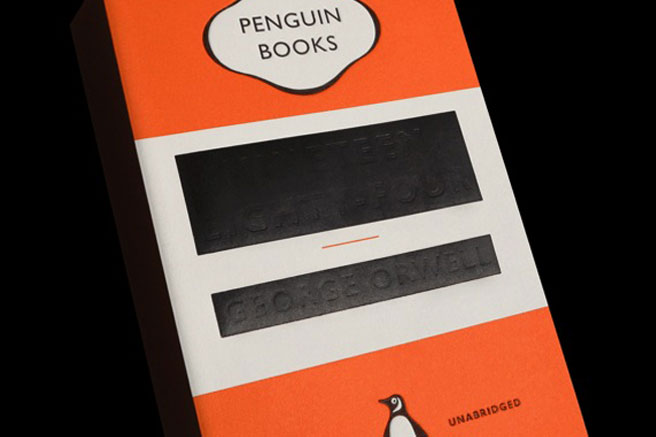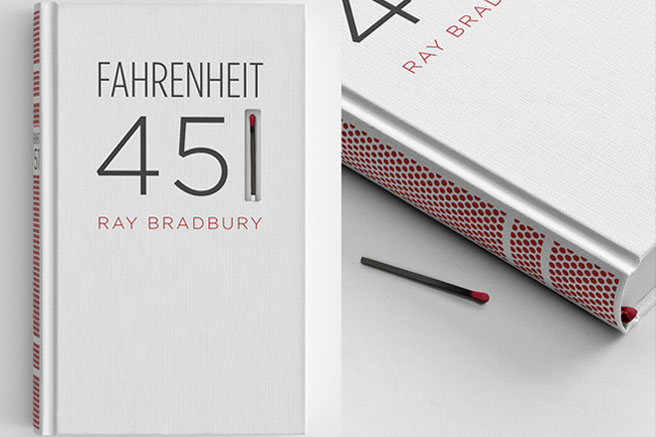

As a fan of George Orwell, I was more than excited when Penguin released an edition of the dystopian classic, 1984, that perfectly represented one of the story’s core issues: censorship. Though I already owned a copy of the book, I immediately signed into my Amazon account and ordered the latest one anyway. I convinced myself that purchasing it was just my way of appreciating the work of one of my favourite authors.
But when I found out that Fahrenheit 451, another major dystopian novel by Ray Bradbury, was turned into a unique piece of art by designer Elizabeth Perez, I started to question my own motivation for buying the new 1984 edition by David Pearson. Was it really an appreciative gesture directed at the author?
From an aesthetic perspective, Perez’s design is indeed eye-catching despite its simplicity, but the way in which she combined the story’s main point—the horrors of living in society that burns books—with the physical book itself is what makes it interesting. The “1” in the title’s “451” is replaced by a match that one can actually strike against the book’s spine. Yes, this edition can actually be set on fire! Unnecessarily extreme though it may seem, it is impossible to deny the design’s conceptual success.
Though I didn’t purchase Perez’s edition, I found myself returning to the question of appreciation. What is the true source of my fascination towards these books? Is it the author, the story, the design, the designer, or a combination of all four? More importantly, what will the answer reveal?
While great books deserve all the appreciation it can get, how many times can a book (cover) be re-designed until the story no longer becomes the reason that people talk about it? For any work of literature to become less important than its outer crust is a tragedy, but it would be unfair to say that the quality of a book’s design has no impact on the reading experience. My idea of a good design is one that reminds readers of a good story, one that can symbolize rebirth. But designers, as well as readers, should not forget that the story itself hasn’t changed—meaning that it is important to consider the time in which it was written. Perhaps this is the only way we can all truly respect the author without limiting our own creativity.
What do you think? Is there a purpose in re-designing book covers? To what extent should designers explore their visual interpretations of stories from the past?











